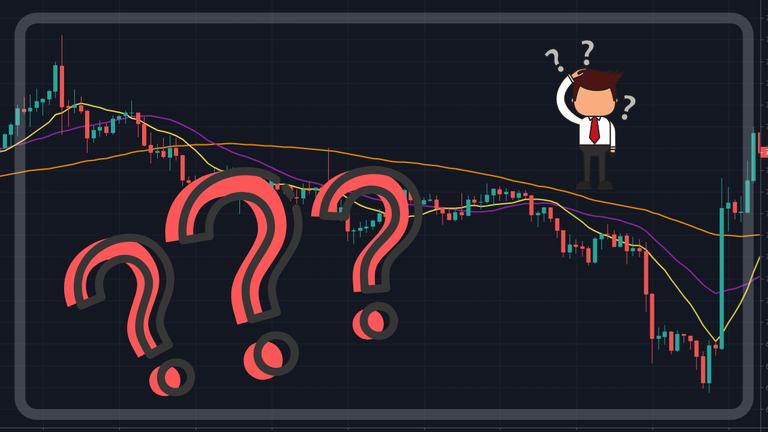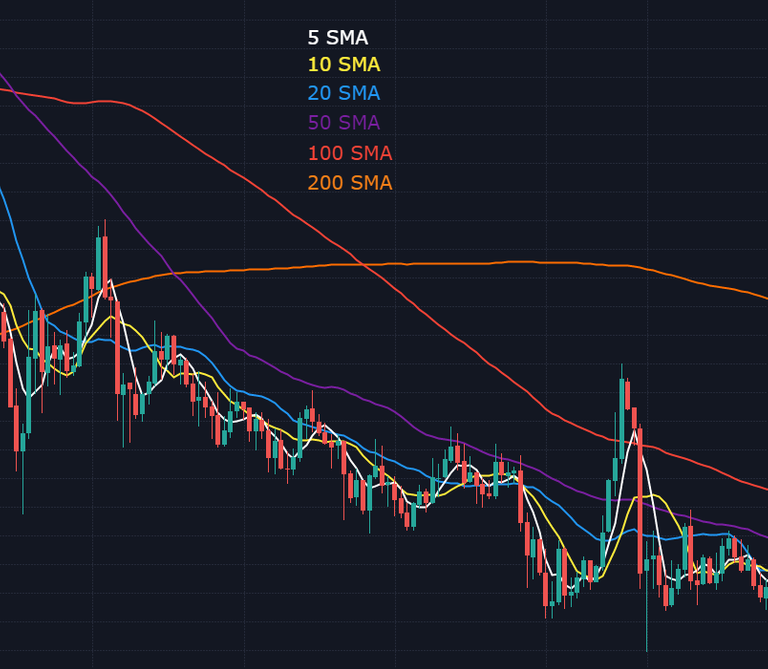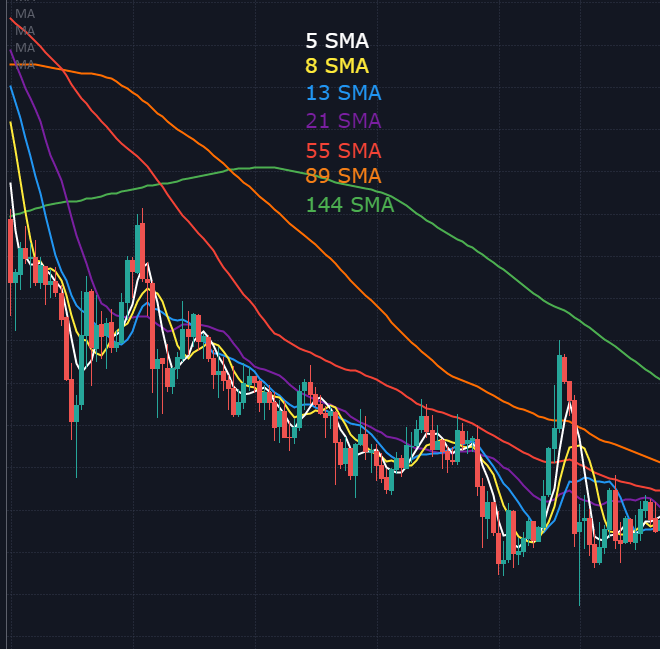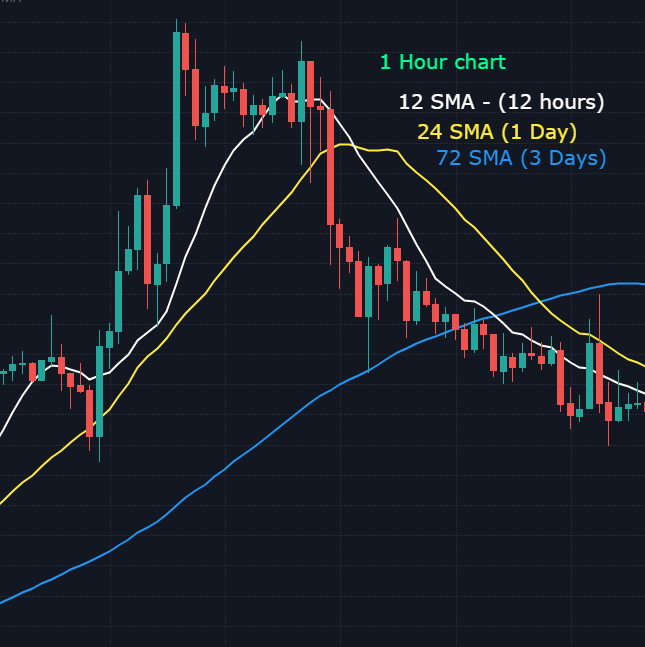
A moving average is a calculation applied to analyze a set of data in point mode to create a series of averages. So moving averages are a list of numbers in which each is the average of a subset of the original data.
In trading we use different types of moving averages, however, something that can take the time or cause us indecision is to find the ideal period that suits our style, in this post, I will show you the most basic methods so that you can find it faster.
1. Use common and recommended values.
These are the values that originate in the old school of trading, that's right, I'm talking about the periods of 5, 10, 20, 50, 100 and 200 which were used in the past in daily graphs to average the cycles of a week, 2 weeks, 1 month, etc. Currently, they are still applied, but not only in daily graphs, but also in any time frame. They offer you the advantage of self-compliance, that is, being used for the most part, many traders will be waiting for the price to react to the moving averages of these periods, therefore increasing the possibility of a mass reaction that affects the movement of the Price.

2. Use Fibonacci succession numbers
Described by Leonardo de Pisa, in the 13th century in Europe, is nothing more than a succession of natural numbers, starting with numbers 0 and 1, the following numbers will be a sum of the previous two corresponding in the series, for example, 0, 1, 1 (0+1), 2 (1+1), 3 (2+1), 5 (3+2), 8 (5+3)... And so on. From this sequence, we can also find the famous "Golden Ratio" that we will see in the levels of Fibonacci retracements and extension, but this will be the theme for another post. The Fibonacci sequence is found in fields ranging from game theory to the biological configurations of existing beings (including us), hopefully, it could also be applied to trading, an activity that is governed by the behavior of us speculators. In trading this series of numbers has surprising results according to the behavior of the price, that is why applying them to moving averages results useful, the most commonly used sequence values are 5, 8, 13, 21, 55, 89, 144, 243.

3. Average your preferred time frames
Count this, after all, the job of the moving average is to average and draw a line about this. This way you can also choose the time frame you'd like to average based on your strategies. If you are working in a time frame, let's say, of 15 minutes, you could perform a simple calculation dividing by 15 the time frame in minutes that you want to average, an example, 4 hours is 240 minutes, we divide it by 15 and the result is 16, therefore a 16-period moving average would be averaging the price of the last 4 hours.

Attention to the following, all the examples and suggestions I'm based are for the simple moving average (SMA), there are many types of moving average that include alterations in their formulas, So in addition to their period you will have to consider their function in addition to their length, in another post we will talk about that subject.
Well, that's it for today, I hope you will serve that information if you liked don't forget to support me with a vote and follow me if you have any questions, suggestions or opinions or want me to talk about a specific topic, do not hesitate to leave it in the comments
Reminder/Disclaimer:
---All the information found on this blog IS NOT financial advice of any kind, It is just with educational and helping purpose. Investment in financial markets is a risky activity where you can lose a lot of money. Take all your decisions at your own risk--
NOTE: I'm the owner of this content, you can find this article at my social media:
https://trybe.one/user/31072
https://www.uptrennd.com/user/NTIzNjE=
https://steemit.com/@tradingoz
https://www.minds.com/trading0z/
https://www.publish0x.com/the-ever-wanted-trading-tips
You can also find me there with the same username: tradingoz
If a different type of proof is required by admins to prove the ownership I'd be glad to provide it.
Posted using Partiko Android
Thank you so much for being an awesome Partiko user! We have just given you a free upvote!
The more Partiko Points you have, the more likely you will get a free upvote from us! You can earn 30 Partiko Points for each post made using Partiko, and you can make 10 Points per comment.
One easy way to earn Partiko Point fast is to look at posts under the #introduceyourself tag and welcome new Steem users by commenting under their posts using Partiko!
If you have questions, don't feel hesitant to reach out to us by sending us a Partiko Message, or leaving a comment under our post!